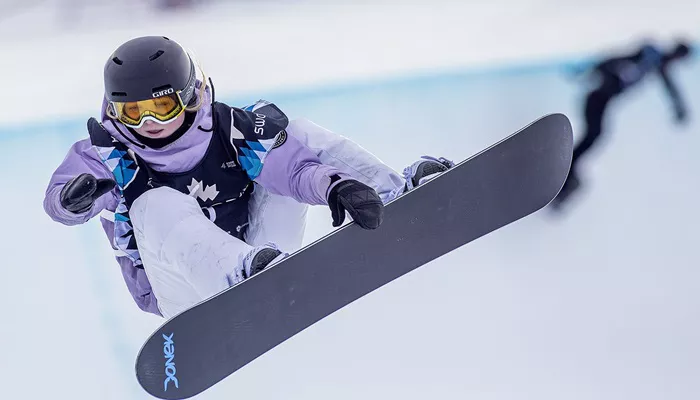Snowboarding is an exhilarating winter sport that blends speed, skill, and adventure. Whether you’re carving down steep mountain slopes or practicing tricks in the terrain park, safety should always be a priority. One of the most commonly debated pieces of protective gear in snowboarding is knee pads. Some riders swear by them, while others argue they are unnecessary.
So, should you wear knee pads for snowboarding? This article explores the benefits, drawbacks, types of knee pads, and factors to consider before making a decision.
Why Knee Protection Matters in Snowboarding
1. Common Knee Injuries in Snowboarding
Snowboarding places significant stress on the knees, especially during falls, jumps, and sharp turns. Some of the most common knee injuries include:
Bruises and Contusions: Hard impacts from falls can cause painful bruises.
Patellar Tendonitis: Repetitive movements, such as bending and landing, can strain the knee tendons.
ACL and MCL Injuries: Sudden twists or awkward landings can tear ligaments, leading to severe knee damage.
Meniscus Tears: Abrupt rotational movements can cause cartilage injuries in the knee.
Wearing knee pads can reduce the risk of these injuries by absorbing impact and providing extra support.
2. Impact Absorption and Shock Reduction
Knee pads are designed to absorb the force of falls, which is particularly useful in terrain parks where riders often attempt jumps, rail grinds, and other tricks. By cushioning the knees, they reduce the likelihood of painful impacts and long-term damage.
3. Extra Warmth and Comfort
Besides protection, knee pads offer an added layer of insulation. They help keep joints warm in extreme cold, improving flexibility and reducing stiffness during long snowboarding sessions.
Potential Drawbacks of Wearing Knee Pads
While knee pads offer many benefits, some snowboarders choose not to wear them for various reasons.
1. Restriction of Movement
Some riders find knee pads bulky and restrictive, limiting their range of motion. However, modern knee pads are designed to be lightweight and flexible, reducing this issue.
2. Overheating and Discomfort
On warmer days, wearing additional padding can cause discomfort and excessive sweating. Choosing breathable knee pads with moisture-wicking materials can help alleviate this problem.
3. False Sense of Security
While knee pads provide protection, they do not make snowboarders invincible. Relying too much on protective gear without focusing on technique and proper falling methods can still lead to injuries.
Types of Knee Pads for Snowboarding
If you decide to wear knee pads, choosing the right type is essential. There are different styles designed for various riding styles and preferences.
1. Hard-Shell Knee Pads
Feature a rigid outer shell for maximum impact protection.
Ideal for terrain park riders and those attempting tricks.
Bulkier but provide excellent shock absorption.
2. Soft-Padded Knee Sleeves
Made of flexible foam or gel padding.
Less restrictive and fits comfortably under snowboarding pants.
Suitable for all-mountain riders who want extra protection without bulk.
3. Compression Knee Pads with Gel Inserts
Offer both impact protection and joint support.
Ideal for snowboarders with pre-existing knee pain or injuries.
Helps reduce fatigue during long rides.
When Should You Wear Knee Pads for Snowboarding?
While knee pads are beneficial, their necessity depends on several factors:
1. Experience Level
Beginners: New snowboarders fall frequently, making knee pads a wise choice.
Intermediate Riders: Riders comfortable with their technique may not need them unless they’re attempting tricks.
Advanced Riders: Park riders and those hitting large jumps should consider knee pads for extra safety.
2. Snowboarding Style
Freestyle Riders: Terrain park riders benefit the most from knee pads due to frequent falls.
Freeride and All-Mountain Riders: Generally encounter fewer knee impacts but may still benefit from added protection.
Backcountry Riders: Knee pads can be useful for rugged terrain with rocks and trees.
3. Pre-Existing Knee Conditions
If you have a history of knee injuries or chronic pain, knee pads provide extra support and protection, reducing strain on joints.
Tips for Choosing the Right Knee Pads
If you decide to wear knee pads for snowboarding, consider the following tips:
1. Prioritize Comfort and Fit
Ensure the knee pads fit snugly but do not restrict movement.
Look for adjustable straps for a customizable fit.
2. Opt for Breathable Materials
Moisture-wicking fabrics help prevent overheating and discomfort.
Ventilated designs enhance airflow, keeping knees cool.
3. Consider the Level of Protection Needed
Hard-shell pads provide maximum protection but may be bulky.
Soft-padded sleeves are more comfortable but offer less impact resistance.
4. Test Them Before Hitting the Slopes
Wear the knee pads while simulating snowboarding movements to ensure they stay in place.
If they shift excessively, they may not provide adequate protection during falls.
Conclusion
So, should you wear knee pads for snowboarding? The answer depends on your riding style, experience level, and personal preference. While knee pads offer significant benefits—such as impact protection, injury prevention, and added warmth—they may not be necessary for every rider. Beginners, freestyle snowboarders, and those with knee issues can greatly benefit from wearing them, whereas experienced all-mountain riders may find them optional.
Ultimately, safety should always come first in snowboarding. Whether you choose to wear knee pads or not, practicing proper falling techniques, maintaining strong leg muscles, and staying aware of your surroundings are crucial to preventing injuries on the slopes.

